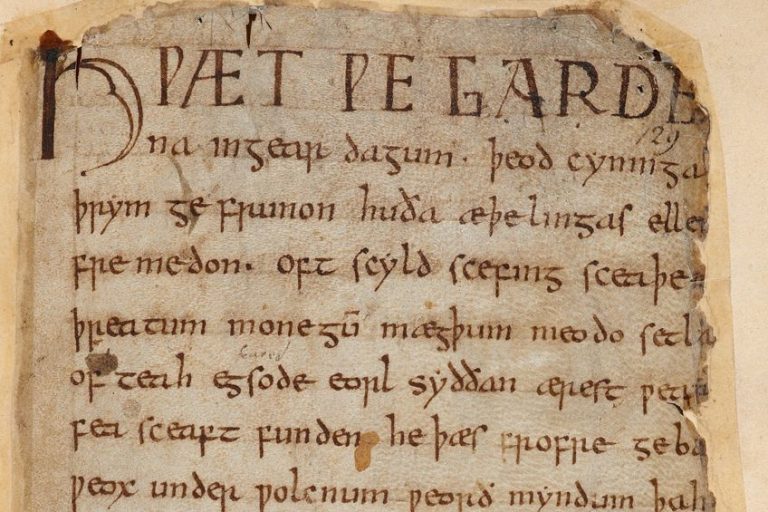Concrete Poetry – Creating Meaning Through the Shape of Words
What is a concrete poem? That is what we are going to explore today. We are going to examine the history of this form and the history of the term itself, the characteristics of concrete poetry, a more specific definition of a concrete poem in the more technical sense of the term, and a final look at some famous poets who have used this form and their examples of concrete poetry. With all of that, we should be able to understand concrete poetry a lot more. If this is of interest, let’s get started!
Table of Contents
A Look at Concrete Poetry
This poetic form is noted for its use of a specific typography. The general idea behind most poetry is that the poem’s text is arranged in a very ordinary capacity. It is read like any other text, but that is not the case here. Concrete poetry makes use of the typography, or structure of the poem, to create certain shapes. This means that the use of letters, words, punctuation marks, and so on, are not entirely in service to the message of the poem, but also to the specific shape and form of the poem as a whole.
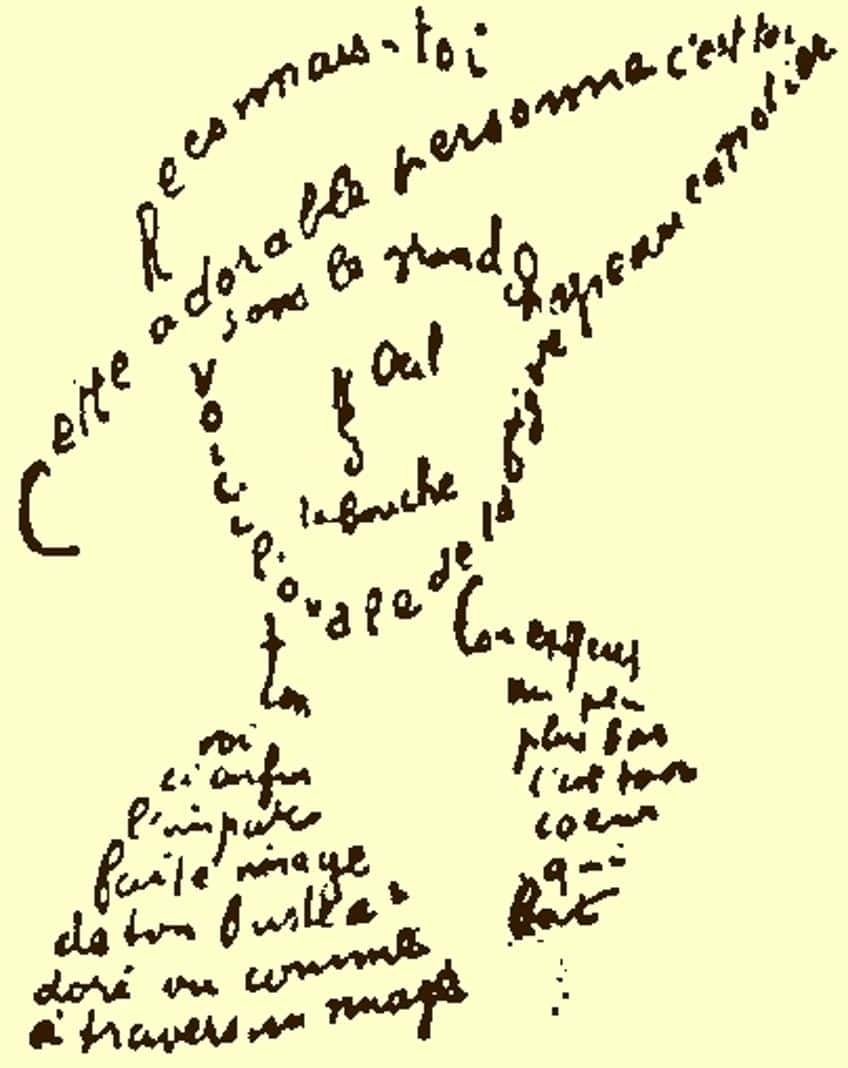
This results in poems that are in certain shapes. For instance, think of a love poem that is made to look like a heart or a Christmas poem that is in the shape of a Christmas tree. While the use of typography in this manner has been used for a long time, the specific definition of a concrete poem in terms of the actual term “concrete poetry”, is significantly younger. However, we will discuss that over the course of our examination of concrete poetry, and we will start with its history.
The History of Concrete Poetry
The earliest instances of shaped poetry, in which the structure of the poem formed part of the poem, could be found in the 3rd and 2nd centuries BCE in Greek Alexandria. Only a few of these examples of ancient, shaped poetry have managed to survive into the present. Other examples of shaped poetry of this description could be found throughout history, such as through the works of some Baroque poets. Some of the earliest in European history were religious poems, such as Easter Wings by George Herbert, which will be discussed in more detail below.
This form could continue through the development of free verse poetry and into the 20th century.
It was during this period that the actual term “concrete poetry” was coined by avant-garde poets who wished to experiment with what poetry could do. Today, concrete poetry, or at least our more generalized definition of it as shaped poetry, has become quite popular. However, it has never managed to achieve the same level of fame as the kinds of poems that make use of a more traditional overall structure for their design. Now, you may wonder about the characteristics of concrete poetry. So, let’s have a look.
The Characteristics of Concrete Poetry
The basic idea behind concrete poetry is that it is any instance of poetry in which the image of the poem is often more important than the words of it. This means that the poem’s visual form is determined by the typography and other added elements to, for instance, transform a poem into a specific shape. This also means that poetry of this description needs to be written and will not often work when read aloud. The visuals are of integral importance to the whole, and they need to be taken into account.

This all means that the characteristics of a concrete poem are only really based on the visual arrangement of the poem. So, a concrete poem could make use of any number of poetic techniques, and those techniques will not affect whether or not it is or is not an example of a concrete poem.
The Specific Definition of a Concrete Poem
Until now, we have examined the term “concrete poetry” in a looser sense than the term itself technically applies. While shaped poetry, in which the typography and arrangement of the poem are shaped in some or another manner, has been around for a very long time, the actual term only arose in the mid-20th century in the Americas.
It came to be associated with a specific form of poetry that developed during that time, and while the term was only truly developed in the post-war period, it did have some of its earliest forms before the Second World War.
So, this indicates that the actual definition of a concrete poem could be seen as something that solely occurred from this later period, but it would be restrictive to only pay attention to such a definition. The ideas behind concrete poetry have existed far longer than the term, and so it may be beneficial to somewhat ignore the specific meaning to instead focus on a more generalized one that applies to more poetry.
Famous Poets in the Concrete Poetry Tradition
We are going to examine some of the most famous poets who have made use of concrete poetry. Now, it should be remembered that the concept of “concrete poetry” arose significantly later, but the idea of shaped poems that use specific typography is a lot older as a concept. For that reason, we will examine a number of poets who made use of shaped poems that could, later, have been called concrete poetry. Some of these poets are significantly older than the origin of the term used in the standard definition of a concrete poem, but it can still be argued that they are part of this larger tradition.

George Herbert (1593 – 1633) from Montgomery
| Poetic Movement | Metaphysical poetry |
| Years | 1593 – 1633 |
| Place of Birth | Montgomery, Wales |
| Known For | Easter Wings (1633) |
George Herbert was a British poet and priest. He would become one of the most important metaphysical poets and his work would become very influential despite the relatively young age at which he passed away.
As a priest, his work could often be seen as holding a religious element, and he was even said to have moved away from secular desires and ambitions during his mid-thirties.
While his primary work was in metaphysical poetry, George Herbert did have some influence on what would later come to be known as concrete poetry. While he lived hundreds of years before that term was ever used, his work titled Easter Wings, which will be discussed below, is seen as one of the earliest instances of the kind of poetry that could be termed an instance of concrete poetry.
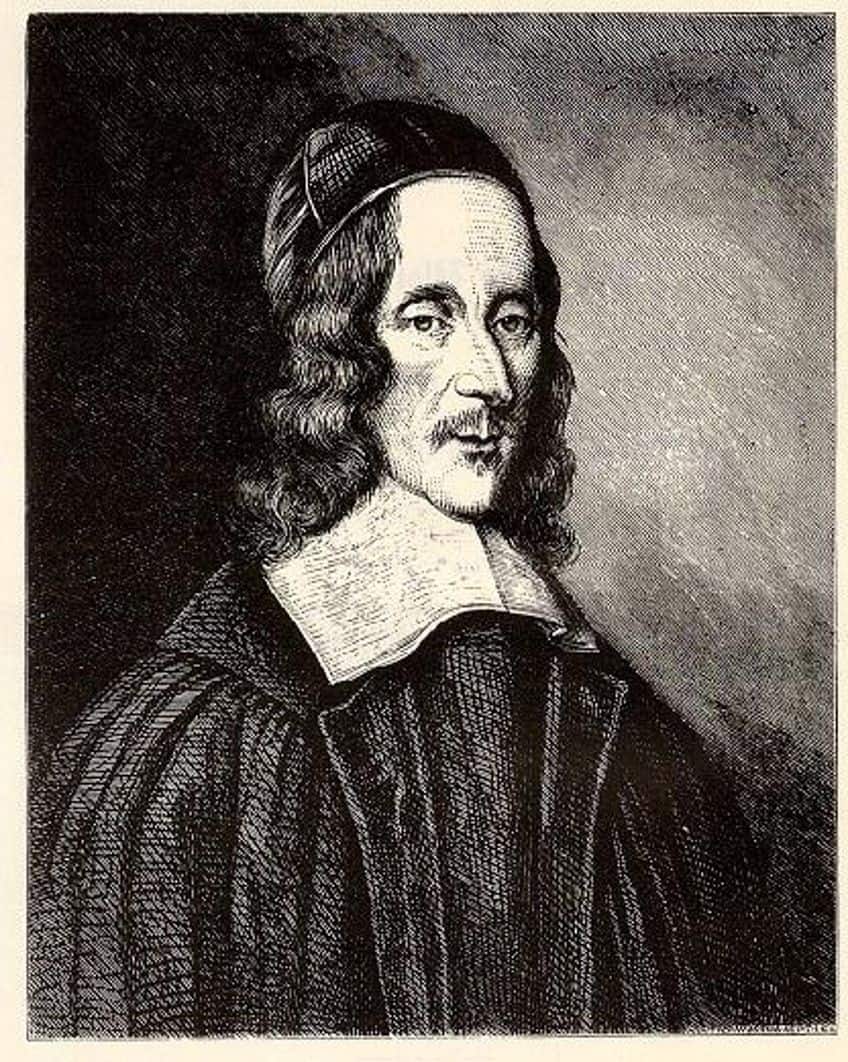
Lewis Carroll (1832 – 1898) from Daresbury
| Poetic Movement | Nonsense poetry |
| Years | 1832 – 1898 |
| Place of Birth | Daresbury, United Kingdom |
| Known For | The Mouse’s Tale (1865) |
Lewis Carroll was an English writer who is best known for writing Alice’s Adventures in Wonderland and Through the Looking-Glass. His greatest influence would be in the development of nonsense literature, such as poetry and prose texts that made use of wordplay, invented words, nonsensical situations, and fantastical elements.
In addition to this, he can be seen as an early user of what would later come to be known as concrete poetry.
Many of his texts were silly and made use of inventive techniques, and one of those poems, The Mouse’s Tale, will be discussed below. Other than his work in literature, he was also a puzzle designer, and he produced the word ladder puzzles used in Vanity Fair magazines from 1879 to 1881. His enjoyment of puzzles was also conveyed in his writings, and many of them feature interesting logic problems.
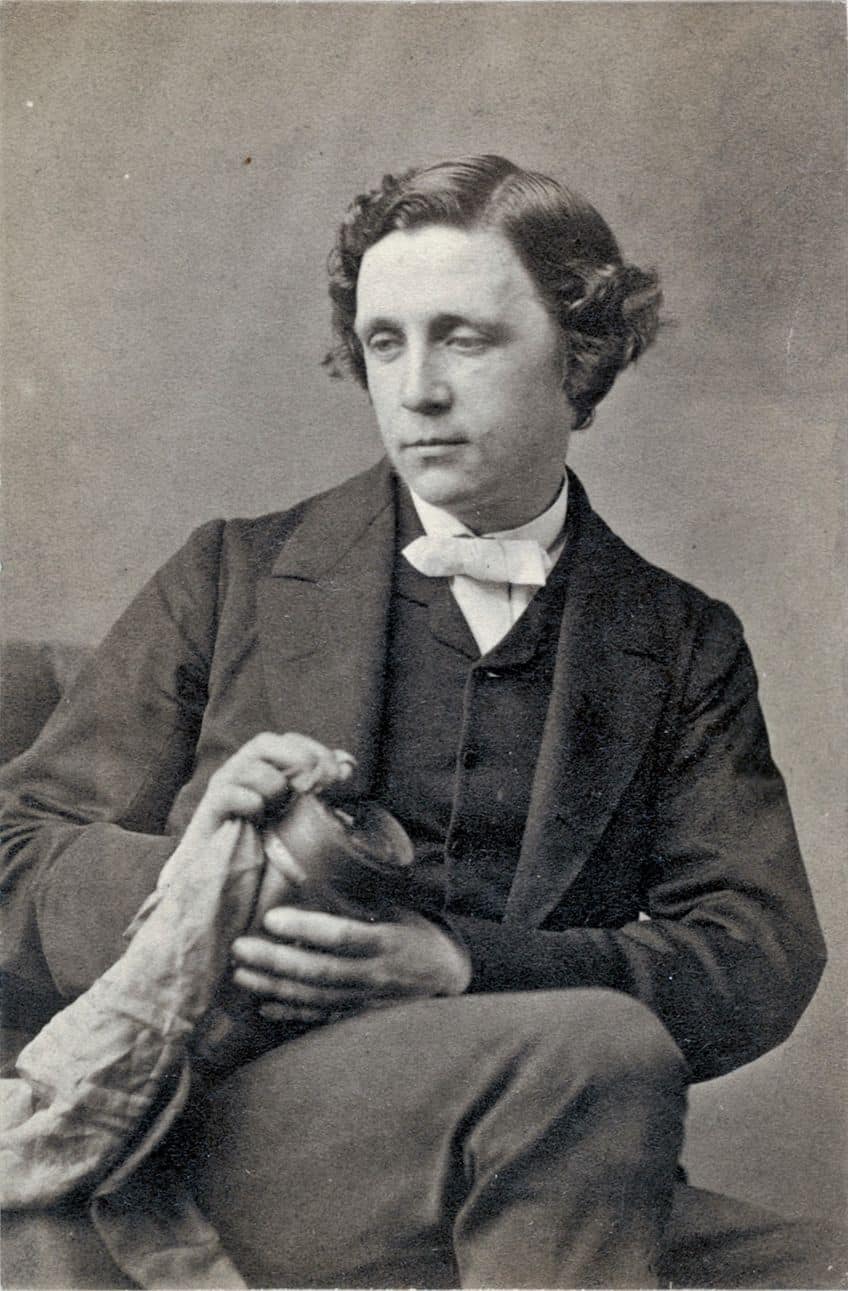
Filippo Tommaso Marinetti (1876 – 1944) from Alexandria
| Poetic Movement | Futurism |
| Years | 1876 – 1944 |
| Place of Birth | Alexandria, Egypt |
| Known For | Zang Tumb Tumb (1912 – 1914) |
Filippo Tommaso Marinetti was an Italian writer and one of the central figures in the Futurist movement. His work would come to be associated with an attempt to present an image of the future that was distinct from everything that had come before, and his most famous non-poetic text was The Futurist Manifesto.
However, he did also produce important later works in more poetic mediums, such as the poem Zang Tumb Tumb, which will be discussed in more detail below.
However, as with many of the Italian Futurists, there was a connection with the Italian Fascist Party under Benito Mussolini. For instance, Filippo Tommaso Marinetti would later be involved in writing the Fascist Manifesto. He would continue to exert an influence on Futurism into the future, and his work remained influential despite the connections with the fascist regime in Italy.
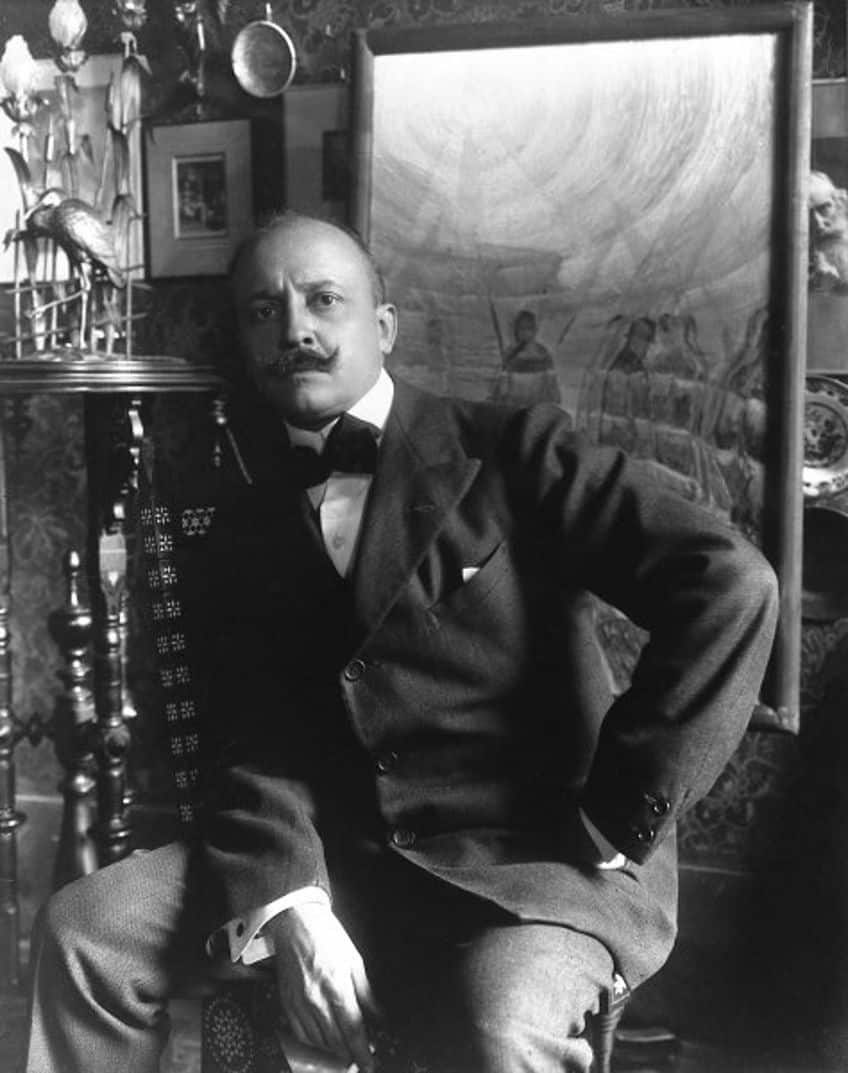
Famous Examples of Concrete Poetry
Above, we discussed some of the most famous figures to have made use of concrete poetry, but now, we will examine some of the poems that they have written. It is worth once again stating that many of these poems were written before the coining of the term “concrete poetry”, but they are still examples of typographically-shaped poems that, had they been written later, likely would have been termed concrete poems.
So, let’s examine three of these examples of what can be called concrete poetry.
Easter Wings (1633) by George Herbert
| Date Published | 1633 |
| Type of Poem | Concrete poem |
| Shape | Bird wings |
| Topic | The fall of man |
Easter Wings is a 17th-century poem by George Herbert, and, because of this, it does not fall within the usual bounds of what is considered to be a concrete poem according to the 20th-century definition, but it is a precursor to that later form. The poem was originally published after the poet’s death and is a great example of the kind of work that can be done with a poem that uses unusual typography.
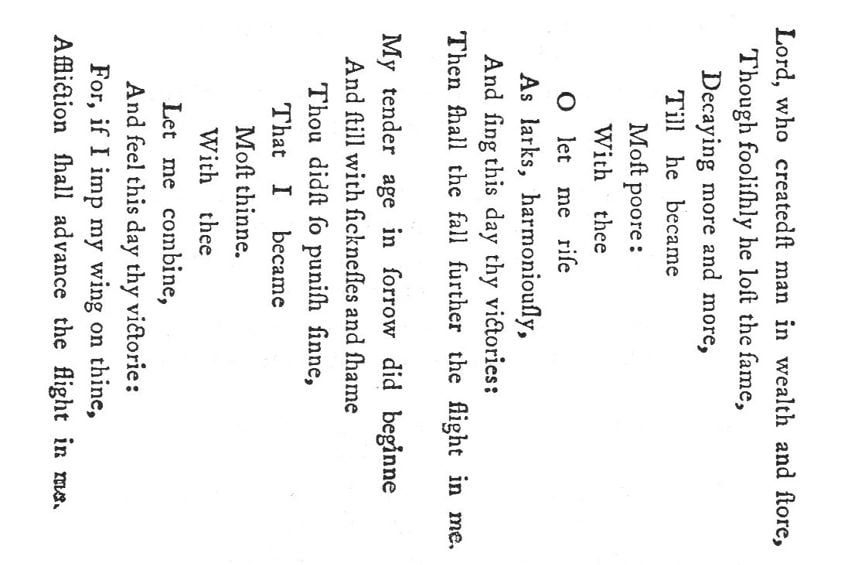
The poem’s structure makes it look like a pair of open wings. As the poet was a priest, his poem about wings is related to the spiritual ability to fly above the kind of suffering that can be found in our mortal lives. For this reason, the wings can be argued to be the wings of an angel, and they come to represent our potential spiritual connection to the heavens.
This poem may not have been written when the term “concrete poetry” was created, but it does fit in with the general definition of that poetic form.
The Mouse’s Tale (1865) by Lewis Carroll
| Date Published | 1865 |
| Type of Poem | Concrete poem |
| Shape | A mouse’s tale |
| Topic | Legal systems |
The Mouse’s Tale is a poem by Lewis Carroll, who is most famous for writing Alice’s Adventures in Wonderland. The poem is actually a part of that novel, and it has become a fantastic example of this kind of shaped poetry. This poem was published long before the definition of concrete poetry was determined, but in retrospect, it can be termed a form of it.
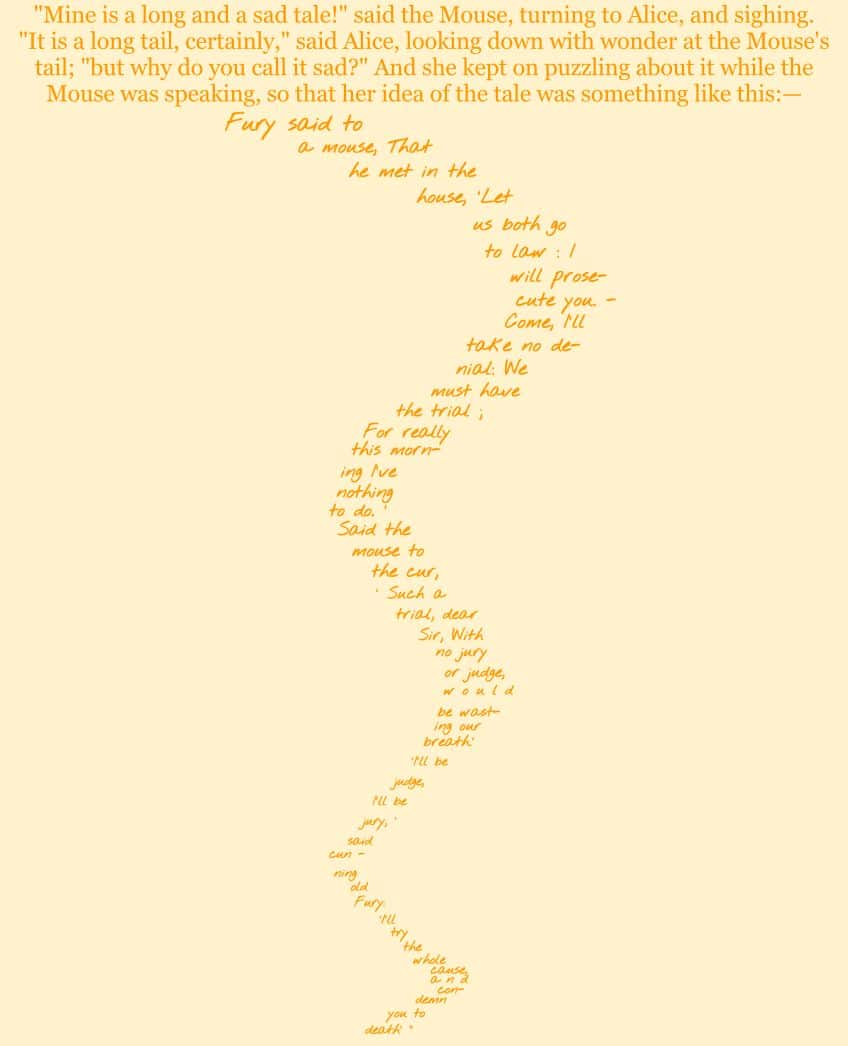
The poem is structured to look like the tail of a mouse, hence the title’s play on words. The poem is also a satirical response to the judicial system as the poem is concerned with a legal battle between a mouse and a character named Fury.
The poem’s seemingly silly design and structure hide its heavier critique of legal systems and the need for fair and balanced trials.
Zang Tumb Tumb (1912 – 1914) by Filippo Tommaso Marinetti
| Date Published | 1912 – 1914 |
| Type of Poem | Concrete poem |
| Shape | Lines, circles, squiggles, and so on |
| Topic | Siege of Adrianople |
Zang Tumb Tumb is a concrete poem that was published in segments over the course of several years. This long concrete poem makes use of an array of inventive images and poetic techniques to demonstrate an examination of the Siege of Adrianople. The poet, Filippo Tommaso Marinetti, was a witness to this war when he was a reporter. This poem has become one of the most famous examples of concrete poetry.

The poem’s techniques include methods to present images of mechanized warfare. There are uses of color, various grammatical symbols to punctuate the points that are made, and the use of letters to simulate the appearance of gunfire. This concrete poem has become an exemplary version of this technique, and its influence would go on to affect both poetry and the visual arts.
With this final instance of a concrete poem, we have arrived at the end of our look at the concept of concrete poetry. This unusual poetic form, while not being seen as standard, is common enough that any who are versed in poetry have heard of it, if not the name itself. This article has examined the history of the form, its characteristics, a specific definition of a concrete poem, and some of the poets who have made use of this style. Hopefully, the question, “What is a concrete poem?”, has been answered today, and you should always remember thar there are many examples of this form that you can find and enjoy.
Frequently Asked Questions
What Is a Concrete Poem?
A concrete poem is a type of poem that makes use of a specific, and often unusual, typography. This means that the linguistic elements, such as words and symbols, are arranged in a shape. For instance, an example of concrete poetry might make use of a heart-shaped poem if it wants to be for Valentine’s Day. This typographical arrangement can be used for a variety of purposes, but many of the most famous forms of concrete poetry do so for more light-hearted reasons, such as the above-mentioned heart-shaped poem.
When Did Concrete Poetry Originate?
While the idea of making use of more unusual typography is centuries old, the actual term concrete poetry is a creation of the 20th century. However, the general idea behind concrete poetry, and its use of unusual typography, can be applied retrospectively to poems written long before the idea of concrete poetry arose in the 20th century.
Is Any Poem With Strange Typography an Example of Concrete Poetry?
Not every poem with strange typography is necessarily an example of concrete poetry. While the term has broadly come to define this, there are some, like Rupi Kaur, who both do and do not make use of concrete poetry. Her work, as an example, does sometimes make use of typography that could be seen as concrete poetry, but many of her poems also integrate pictures into the poetry, and this is not technically a form of concrete poetry. Some of her poems can be considered examples of concrete poetry though, such as many of the poems that can be found in the collection, Milk and Honey (2014).
Who Are Some of the Most Famous Users of Concrete Poetry?
There are many figures who have made use of concrete poems, and some of the most notable include figures like Filippo Tommaso Marinetti, Lewis Carroll, and George Herbert. However, there are many others who make use of this form, and contemporary figures like Rupi Kaur may be seen as more contemporary users of this variety, although her poetry does often deviate from a more traditional definition of a concrete poem.
What Are Some of the Most Famous Examples of Concrete Poetry?
Some of the most famous examples of concrete poetry include poems like Easter Wings (1633) by George Herbert, The Mouse’s Tale (1865) by Lewis Carroll, and Zang Tumb Tumb (1912 – 1914) by Filippo Tommaso Marinetti. However, there are many other instances of concrete poetry that can be explored, and as this form is noted for its stylistic presentation over the content of what is said, they can often be fun to read.
Justin van Huyssteen is a freelance writer, novelist, and academic originally from Cape Town, South Africa. At present, he has a bachelor’s degree in English and literary theory and an honor’s degree in literary theory. He is currently working towards his master’s degree in literary theory with a focus on animal studies, critical theory, and semiotics within literature. As a novelist and freelancer, he often writes under the pen name L.C. Lupus.
Justin’s preferred literary movements include modern and postmodern literature with literary fiction and genre fiction like sci-fi, post-apocalyptic, and horror being of particular interest. His academia extends to his interest in prose and narratology. He enjoys analyzing a variety of mediums through a literary lens, such as graphic novels, film, and video games.
Justin is working for artincontext.org as an author and content writer since 2022. He is responsible for all blog posts about architecture, literature and poetry.
Learn more about Justin van Huyssteen and the Art in Context Team.
Cite this Article
Justin, van Huyssteen, “Concrete Poetry – Creating Meaning Through the Shape of Words.” Art in Context. September 26, 2023. URL: https://artincontext.org/concrete-poetry/
van Huyssteen, J. (2023, 26 September). Concrete Poetry – Creating Meaning Through the Shape of Words. Art in Context. https://artincontext.org/concrete-poetry/
van Huyssteen, Justin. “Concrete Poetry – Creating Meaning Through the Shape of Words.” Art in Context, September 26, 2023. https://artincontext.org/concrete-poetry/.








